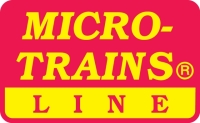
Train Addiction Help Line: 1.866.840.7777
Micro-Trains - N Scale - 40' Single Door Standard Box Car - CP Rail (CP) Green w/ White Lettering & Pacman Logo (PWRS Exclusive) 4-Pack - Not Available Through Micro-Trains (SKU 489-02090289)
Available On: May 1, 2021

Canadian Pacific Railway 40' Single Door Standard Box Car
These cars are painted Green, with white lettering & Paper Service Logo.
Limited Run PWRS – Micro-Trains 4-car Runner Pack
Order yours today through your PORTERS account and earn valuable Micro-Trains Manufacturers Credits towards select PWRS PORTERS Micro Trains Club Lounge Cars.
Railroad boxcars are perhaps not only the best-recognized pieces of equipment ever put into service but also one of the most identifiable symbols of the industry itself. It has a history tracing back to the earliest years when railroads realized that some freight and lading needed at least a little protection from the outside elements and Mother Nature. They have been around since the 1830s, and the height of 40-foot boxcars was in 1942, when the overall fleet peaked at 754,322.
What made boxcars great, at least in the eyes of the railroads, was their ability to haul about anything! Railroads thrive on redundancy to maximize efficiency which was the reason they loved the boxcar so much. For many years the boxcar carried everything from automobiles and paper, to car parts and fresh produce; literally almost anything that would practically fit into the car’s empty, open spaces. The car's development continued to improve over the years – such as switching from basic wood construction with steel outside-bracing to all-steel designs (which were much stronger and capable of hauling heavier loads), even within the same size specifications; 40 feet, a standard size employed by the American Association of Railroads (AAR) although the initial standardization methods came about from the United States Railroad Association during WWI. The first standard, all-steel design entered service in 1932 thanks to the recommendations of the American Railway Association, predecessor to the present-day AAR.
While the 40-footer was a standard design it did come in different setups depending on the type of freight being transported. Double-doors became practical for large/wide loads, end-doors useful for very large lading such as automobiles, and interior tie-down equipment was helpful in keeping sensitive products from being damaged in-transit. Technology for new boxcars with upgraded suspension systems further improved the ride-quality and reduced the chance of damaging freight. The 40-foot boxcar made its first appearance in the 1930s and steadily grew in popularity over the years, which further improved redundancies by allowing for even more space within a given car. Today, the 40-footer remains the common boxcar size.
Over time railroads realized, largely through complaints by shippers, that more specialized cars were needed to haul unique types of freight. This issue led to the development of the well car, autorack, refrigerator car, and several other specific designs. Boxcars, however, still have their place in today's industry especially in carrying bulky items such as autoparts. Of the freight cars running today in North America, covered hoppers rule the day with almost 400,000. Tank cars make up about 300,000 (and are growing fast due to the crude oil boom). Gons come in third at about 200,000. Of the 90,000 or so boxcars, fewer than 18 40-foot boxcars are still around, and only one has turned a wheel lately, far out of sight, and out of mind, the last of its kind.
Features:
- Limited one time production run of these 4 road numbers
- Micro-Trains trucks and couplers
- Accurate painting and printing with correct road numbers for each paint scheme.
- Cars will feature moderate weathering to reflect real world appearance
Notes:
The car will Include:
- Circle reflectors
- Black sill and small white print left of door
- P/circle, ACI and Newsprint shield
- Aluminum roof
- General light airbrush weathering on sides, roof and ends
- CP 58275-58474
The Official Micro Trains SKU numbers for the individual cars in the set are (for purposes of collectors):
020 91 289 CP 58413 NSE MTL 17-186
020 92 289 CP 584xx NSE MTL 17-187
020 93 289 CP 584xx NSE MTL 17-188
020 94 289 CP 584xx NSE MTL 17-189
Reservations Due By: Mar 31, 2020
Expected Release: August 2020 May 2021






$147.98 US
Sold out at Manufacturer
Sold out at Manufacturer means we have inventory but we cannot buy more from our suppliers.


